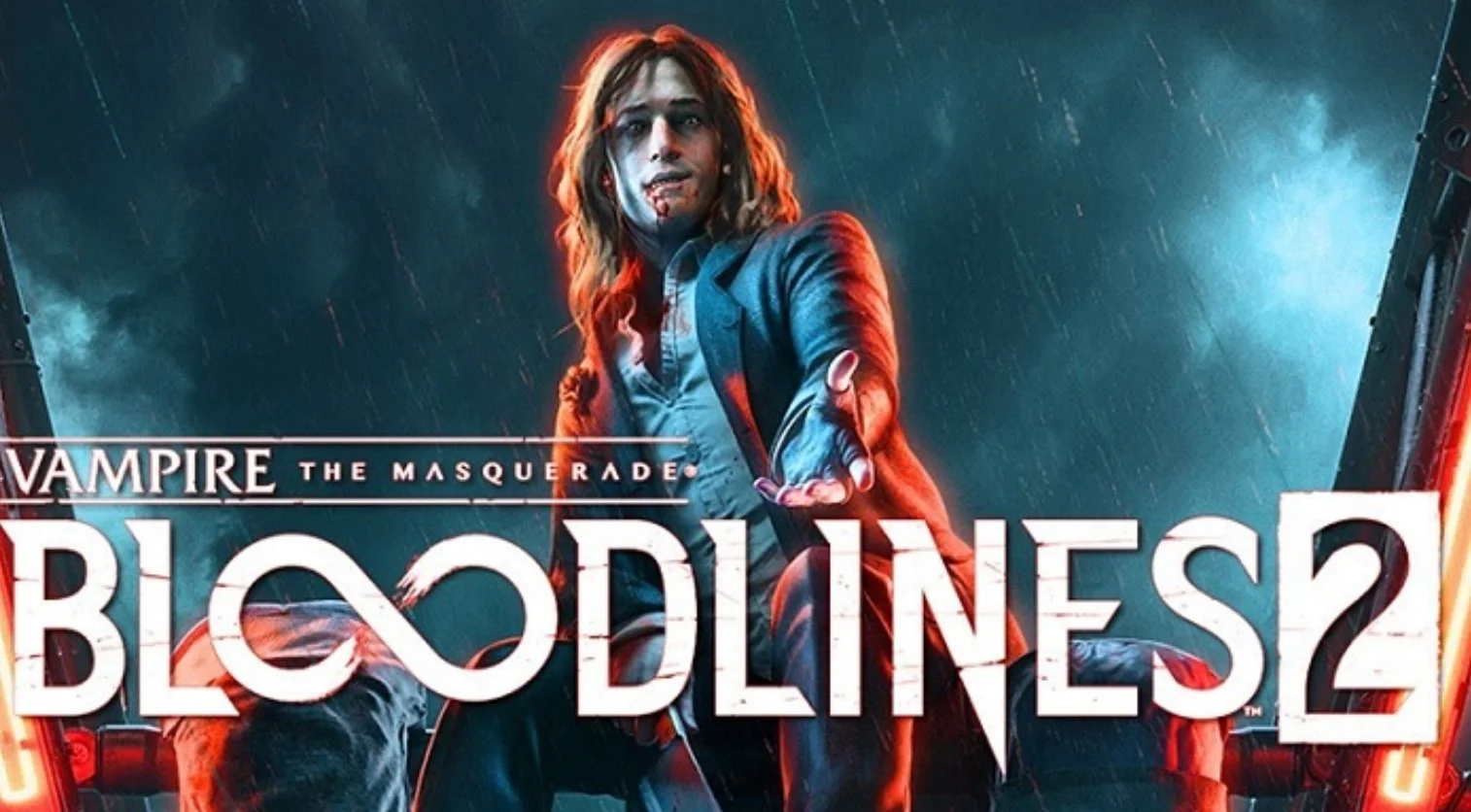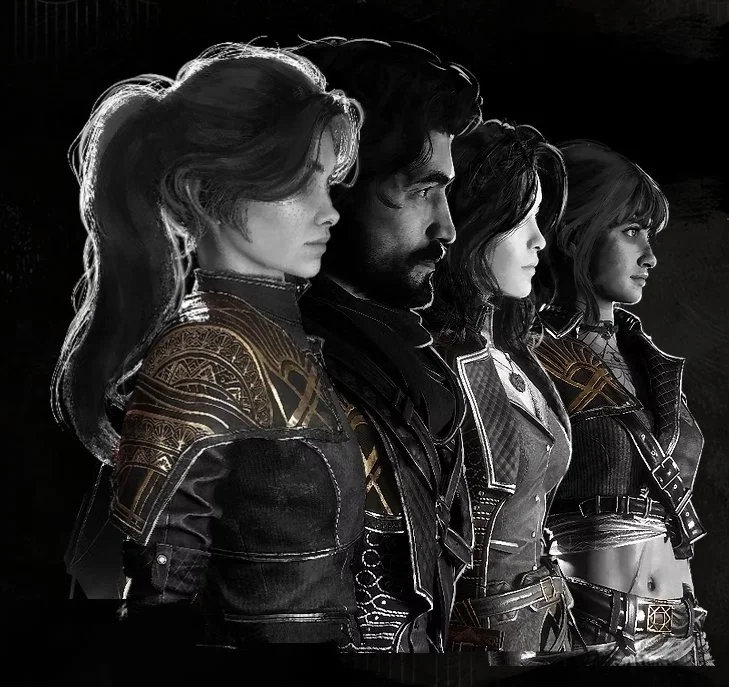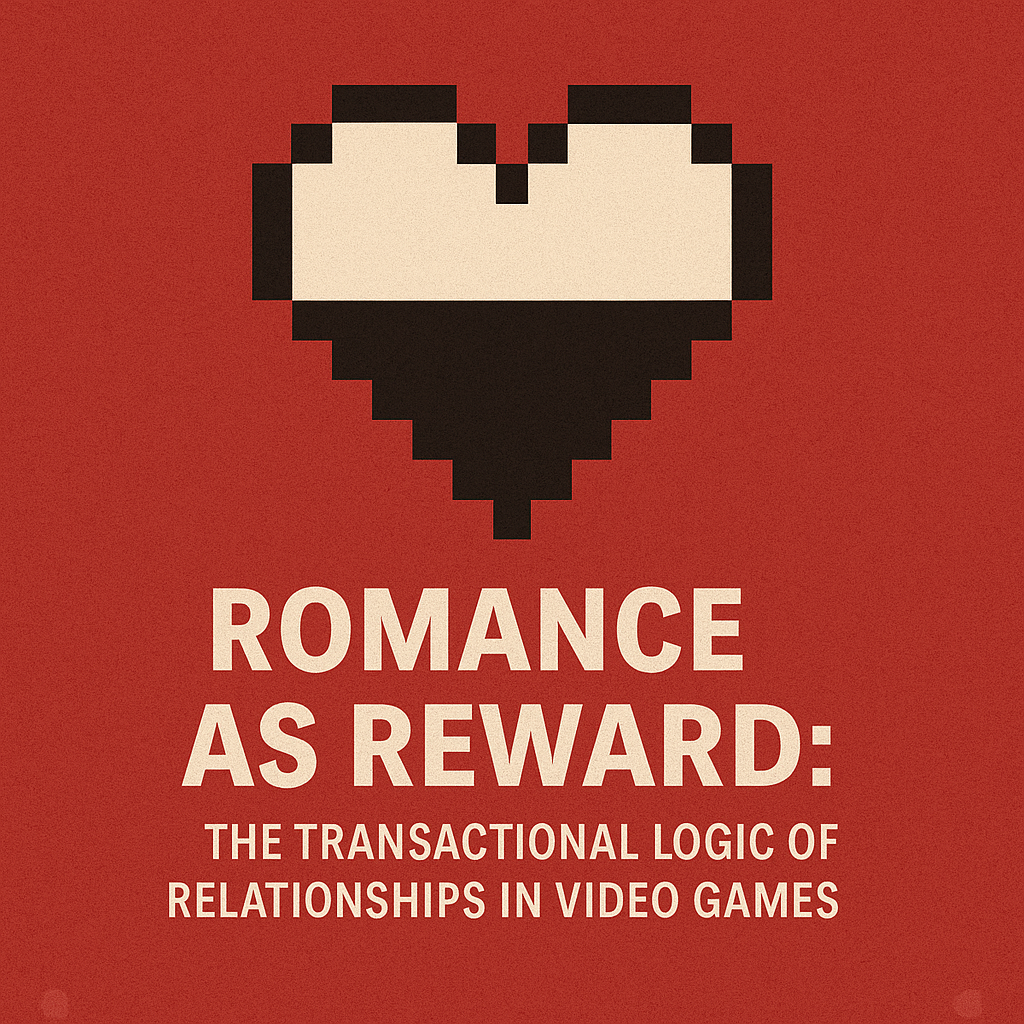Mastering Virtual World Design: Balancing Freedom for Bartle’s Player Types
I. Introduction
In the ever-evolving landscape of digital entertainment, virtual worlds have emerged as vibrant arenas where players can explore, socialize, compete, and create. Massively multiplayer online role-playing games (MMORPGs), sandbox survival environments, and persistent virtual spaces offer participants a level of immersion once unimaginable. As these worlds become increasingly complex and far-reaching—spanning everything from fantasy realms to futuristic simulations—understanding what motivates different types of players is critical for successful game design and community-building. Games that cater to a wide range of motivations tend to foster healthier, more dynamic player communities and enjoy longer-term commercial success.
Bartle’s Player Type Taxonomy (2004)
One of the foundational frameworks for understanding player behaviours in virtual worlds is Richard Bartle’s taxonomy, originally rooted in his observations of Multi-User Dungeons (MUDs) and later expanded in his seminal work Designing Virtual Worlds (2004). Bartle identifies four distinct player types—Achievers, Explorers, Socialisers, and Killers—each characterized by unique motivations, goals, and interaction styles. Achievers seek recognition and progress, Explorers crave discovery and knowledge, Socialisers thrive on meaningful interactions, and Killers revel in competition and displays of power. Although these categories may overlap in practice, Bartle’s classification remains a powerful tool for developers aiming to design engaging virtual environments that appeal to diverse audiences.
Purpose of this article
This article will examine Bartle’s player types in detail and discuss how developers can create virtual worlds that cater to each player’s core motivations. It will also explore the challenges and best practices of balancing freedom and structure in open-world environments, ensuring that both directed objectives and emergent gameplay coexist harmoniously. By outlining strategies that address the varying desires of Achievers, Explorers, Socialisers, and Killers, this article demonstrates the importance of a flexible and inclusive design philosophy—one that not only accommodates diverse players but also sustains vibrant, long-lasting virtual communities.
II. Bartle’s Player Type Taxonomy
Overview of the Taxonomy
Richard Bartle’s (2004) player type taxonomy arose from his extensive study of players in early text-based Multi-User Dungeons (MUDs). Observing how different individuals engaged with the same virtual environment, Bartle noticed patterns in their behaviours and interests, leading him to classify them into four broad categories: Achievers, Explorers, Socialisers, and Killers. Each type reflects a distinct combination of motivations and preferred activities:
Achievers are driven by goals, progress, and tangible rewards.
Explorers are driven by curiosity, knowledge, and the thrill of discovery.
Socialisers are driven by forming relationships and interacting with others.
Killers are driven by competition and demonstrating dominance over other players or systems.
Although many players exhibit a blend of traits, designers often use these archetypes to anticipate the varying expectations and desires within a player community. By considering the unique motivations of each group, game developers can create virtual worlds that offer a rich variety of experiences.
Achievers
Definition and Key Traits
Achievers seek measurable progress and in-game success. They enjoy racking up points, collecting rare items, completing quests, and reaching the highest possible level or rank. For Achievers, the thrill lies in checking off milestones and being recognized, whether through leaderboards, in-game titles, or unique cosmetic rewards.
Behaviour in Virtual Worlds
Progress-Oriented: Actively pursue quests, challenges, and missions.
Completionist Mindset: Strive to collect all possible achievements, trophies, and accolades.
Prestige-Focused: Eagerly display their status or high-level gear to others.
Design Considerations
Achievement Systems: Offer visible milestones, such as badges or titles.
Clear Progress Paths: Provide well-structured leveling or ranking systems with meaningful rewards.
High-Stakes Challenges: Include raids, boss fights, or competitive dungeons that reward dedication and skill.
Explorers
Definition and Key Traits
Explorers thrive on curiosity, experimentation, and discovery. They are drawn to hidden lore, secret areas, and unique mechanics. Unlike Achievers, who seek to master the existing systems, Explorers enjoy uncovering new content or unraveling the game’s deeper narrative layers.
Behaviour in Virtual Worlds
Curiosity-Driven: Investigate every nook and cranny, looking for easter eggs and secret quests.
Mechanics Enthusiasts: Test the game’s boundaries or experiment with unusual item combinations.
Lore Seekers: Immerse themselves in the game’s story, history, and world-building details.
Design Considerations
Rich Environments: Incorporate hidden caves, special puzzles, and secret collectibles.
Depth of Narrative: Provide accessible yet deep lore, logs, codices, or storylines.
Freedom to Experiment: Allow creative or sandbox-style activities, from building to crafting unusual items.
Socialisers
Definition and Key Traits
Socialisers find their primary enjoyment in interacting with others—forming alliances, participating in group events, or simply chatting. Their focus lies less on in-game achievements or exploration and more on the shared experience and relationships fostered within the virtual world.
Behaviour in Virtual Worlds
Community Builders: Create guilds, clans, or social circles to pursue cooperative goals.
Event Organizers: Host in-game gatherings, parties, or role-playing scenarios.
Conversationalists: Spend significant time in chat rooms, forums, or voice channels getting to know other players.
Design Considerations
Robust Communication Tools: Provide guild channels, friend lists, party systems, and social media integration.
Group Activities: Include raids, group missions, or events that reward collaboration.
Safe Social Spaces: Design neutral hubs or taverns where players can relax and interact without combat pressure.
Killers
Definition and Key Traits
Killers are fueled by competition, testing their prowess against others, and sometimes upending the game’s dynamics. While the term can carry a negative connotation, in essence, Killers enjoy PvP (Player vs. Player) combat, duels, and any scenario that allows them to dominate or outsmart opponents.
Behaviour in Virtual Worlds
Combat-Focused: Seek out challenging fights, PvP arenas, and leaderboards.
Risk Takers: Often push boundaries for high-stakes rewards or recognition.
Power Assertion: May engage in conflicts that disrupt other players (e.g., ganking, griefing), depending on game rules.
Design Considerations
Structured PvP Systems: Ensure clear rules and balanced matches, mitigating frustration for others.
Meaningful Rewards for Combat: Offer titles, special gear, or rankings for top performers.
Conflict Management: Employ in-game moderation tools, reporting systems, or “safe zones” to reduce abuse.
Summary of Bartle’s Types
Bartle’s four archetypes—Achievers, Explorers, Socialisers, and Killers—provide a conceptual framework that game designers can reference to ensure their virtual worlds appeal to a wide array of player motivations. By tailoring content and systems to each type, developers can nurture diverse and dynamic communities, preventing any single playstyle from overshadowing the rest. Understanding the core drives behind these categories is the crucial first step in creating rich, balanced, and engaging virtual worlds.
III. Designing Virtual Worlds for Different Player Motivations
Holistic Understanding of Player Types
Bartle’s four archetypes—Achievers, Explorers, Socialisers, and Killers—rarely exist in pure forms. Most individuals display a mix of tendencies, meaning a successful virtual world should offer multiple types of engagement simultaneously. By embracing this holistic view, designers can craft experiences that resonate with a wide player base. For instance, a fantasy MMORPG might include substantial quest lines for Achievers, hidden lore for Explorers, robust social hubs for Socialisers, and well-structured PvP features for Killers. The more these activities intersect naturally, the richer and more cohesive the world feels.
Layered Design Strategies
Creating environments that satisfy a variety of motivations requires thoughtful layering of game systems and content. Different player types can gravitate toward their preferred “layer” without feeling forced into playstyles they dislike.
Core Game Loop Variation
Achievers: Offer daily quests, achievement points, and leaderboard competitions.
Explorers: Embed hidden secrets, crafting recipes, and lore items into routine activities.
Socialisers: Incorporate group missions or spontaneous events to promote teamwork and conversation.
Killers: Provide optional PvP zones or competitive mini-games aligned with the core loop.
Optional vs. Mandatory Content
Flexibility: Let players opt into challenges that suit their motivation.
Shared Progress: Some mechanics should unite all players—for instance, a main storyline—while still allowing freedom to pursue side interests.
Adaptive Systems
Scaling Difficulty: Offer variable challenge levels so that Achievers can push their limits, yet newcomers aren’t overwhelmed.
Procedural Generation or Expanding Maps: Consistently add new regions or dungeons, catering to the Explorers’ hunger for fresh discoveries.
Community-Focused Tools: Provide in-game chat channels, party matchmaking, and guild management features, ensuring Socialisers feel supported.
PvP Balance and Moderation: Maintain fair matchmaking, ranking ladders, and enforce rules to prevent griefing from deterring other player types.
Dynamic and Adaptive Content
While layered design sets the stage, dynamic and adaptive content keeps virtual worlds fresh and responsive to player actions.
Event Cycles
Seasonal Events: Introduce limited-time quests or story arcs that prompt Achievers and Explorers to return.
Community Festivals: Encourage large-scale gatherings, cosplay, or role-play events that cater to Socialisers.
Tournaments and Leaderboards: Showcase the competitive prowess of Killers and challenge Achievers in scheduled PvP events.
Player-Driven Economies
Trader Routes and Crafting Professions: Reward Achievers who master production chains and Explorers who discover rare materials.
Marketplace Socializing: Foster connections between players through bartering and trading, appealing to Socialisers.
Item Scarcity and Territorial Control: Create competition for resources that Killers can leverage, yet regulate it to avoid imbalance.
User-Generated Content
Modding Tools or Building Systems: Encourage Explorers to experiment and create new scenarios for others.
Community Creations: Feature player-designed events, stories, or areas that Socialisers can host.
Ranked Custom Matches: Let Killers set up their own competitive environments, refining the experience to their tastes.
Balancing Multiple Motivations: Case Examples
World of Warcraft (WoW)
Achievers: Mythic raiding and high-level gear pursuit.
Explorers: Hidden quests, rich lore, and Easter eggs.
Socialisers: Guilds, role-playing servers, group dungeons.
Killers: Battlegrounds, arenas, and dueling zones.
Minecraft
Achievers: Earn in-game advancements, speedruns.
Explorers: Massive procedurally generated worlds, hidden structures.
Socialisers: Cooperative building projects, community servers.
Killers: PvP servers and mini-games like “Bed Wars” or “SkyWars.”
EVE Online
Achievers: Complex industrial and economic goals.
Explorers: Vast galaxy exploration, wormholes, data sites.
Socialisers: Corporations, alliances, and large-scale social networks.
Killers: High-risk PvP, territorial conflicts, piracy mechanics.
These examples highlight how multifaceted design and content updates can sustain engagement across player types. By recognizing that each type offers a unique perspective on what constitutes “fun,” designers can ensure their virtual worlds remain vibrant and player-centric over time.
IV. Balancing Freedom and Structure in Open-World Design
Concept of Freedom vs. Structure
In open-world games, freedom typically refers to the player’s ability to explore, experiment, and interact with minimal constraints. Titles like Minecraft or The Legend of Zelda: Breath of the Wild exemplify this approach by offering expansive landscapes, varied pathways, and emergent gameplay systems. Structure, on the other hand, involves well-defined objectives, quests, and narrative arcs that guide players through a curated experience. Achievers, for example, often appreciate clear goals and progression systems, whereas Explorers relish uncharted territory and self-directed discovery. Balancing these two design philosophies is vital because overly structured worlds can feel restrictive, while completely unstructured sandboxes risk leaving players uncertain about what to do next.
Benefits and Drawbacks
Maximum Freedom
Benefits: Encourages creativity (particularly for Explorers), fosters spontaneous social interactions (appealing to Socialisers), and can provide thrilling emergent PvP opportunities (enticing for Killers).
Drawbacks: May leave Achievers feeling directionless if clear goals or progression paths are lacking; also risks chaotic or disruptive behaviour if little moderation is in place.
Strict Structure
Benefits: Offers clear goals and a satisfying sense of advancement for Achievers, ensures new or casual players are not overwhelmed, and allows developers to deliver polished, narrative-driven experiences.
Drawbacks: May stifle the sense of wonder and autonomy that Explorers crave, limit spontaneous social gatherings, and constrain Killers seeking varied PvP scenarios.
Techniques for Balancing
Game designers use various methods to ensure both freedom and structure coexist harmoniously:
Layered Objectives
Offer a central storyline or main campaign (structure) that players can follow at their own pace, while also populating the world with optional side quests, hidden dungeons, and secret lore (freedom).
Achievers can focus on mission completion and progression, while Explorers roam off the beaten path.
Optional PvP Zones
Provide dedicated arenas or clearly marked conflict areas for Killers who want to compete.
Maintain secure regions where Achievers, Explorers, and Socialisers can avoid unwanted confrontations.
Dynamic Event Systems
Introduce spontaneous world events—such as roaming bosses, resource surges, or timed challenges—to spark player curiosity and collaboration.
Ensure these events are diverse enough to appeal to all player types, offering both competitive and cooperative objectives.
Progressive Unlocks
Guide newcomers through a structured tutorial or early-game storyline.
Gradually open up more sandbox elements, crafting systems, or exploration zones as players grow familiar with core mechanics.
Clear Rule Sets and Moderation
Enforce guidelines against harassment and griefing to protect Socialisers and newcomers.
Provide robust reporting and punishment systems that preserve meaningful competition without allowing disruptive behaviour to dominate.
Embracing Player Agency and Emergent Gameplay
When players can shape the game world—by constructing buildings, founding communities, or running player-driven markets—they naturally become invested in their environment. This player agency often appeals to multiple types:
Achievers can show off their accomplishments or “perfect” certain aspects of the world.
Explorers thrive on uncovering and tinkering with new possibilities enabled by user-created content.
Socialisers find deeper meaning in relationships forged through collaborative projects.
Killers test their mettle in emergent, unpredictable conflicts arising from player-made factions or territorial disputes.
However, designers must place guardrails around these freedoms—such as resource constraints, claim systems, or rule-based governance—to keep competition fair and avoid overwhelming newcomers.
Sustaining Engagement
Balancing freedom and structure is not a one-time design decision; it’s an ongoing process. As players explore a world and conquer its challenges, developers must introduce fresh content and novel systems to maintain interest across Bartle’s player types. Live-service models, which update game elements regularly, can breathe new life into established worlds through:
Seasonal content that revisits core gameplay with new themes or challenges.
Expansion packs that expand the map, add story arcs, or introduce entirely new gameplay mechanics.
Player feedback loops that let the community influence future updates and shape the game’s evolution.
Simply Put
In this article, we began by examining Bartle’s Player Type Taxonomy, which classifies players into Achievers, Explorers, Socialisers, and Killers based on their core motivations. Recognizing that many players embody a mix of these traits, we explored various design strategies to ensure virtual worlds can cater to different interests. Layered content, optional versus mandatory objectives, and dynamic systems emerged as consistent themes that allow players to engage in the way they find most rewarding. Furthermore, we analyzed the tension between freedom and structure, underscoring the importance of offering both open-ended exploration and curated goals to accommodate diverse playstyles.
Implications for Future Game Design
As online gaming communities continue to grow, developers are tasked with building virtual worlds that are simultaneously immersive, inclusive, and sustainable. Bartle’s taxonomy offers a useful lens through which designers can balance the varied desires of Achievers seeking advancement, Explorers craving discovery, Socialisers pursuing community, and Killers testing their competitive mettle. Achieving the right equilibrium between sandbox freedom and guided structure is an ongoing challenge—one that requires attentive live updates, responsive community management, and a willingness to evolve the virtual world over time.
Final Thoughts
Bartle’s framework remains highly relevant in modern game design, but it also intersects with other theories of player motivation (such as Self-Determination Theory or Yee’s gamer motivations). As technology advances—through virtual reality, augmented reality, and increasingly sophisticated AI—these worlds will gain even more depth and complexity. The principles outlined here should serve as a foundation, but designers must continually adapt, listening to player feedback and monitoring in-world behaviours to refine their approaches.
Ultimately, successful virtual worlds will be those that celebrate diversity in player motivation, offering meaningful activities for all types while preventing any single style from overwhelming the community. By embracing Bartle’s insights and thoughtfully balancing freedom with structured guidance, developers can create enduring, vibrant virtual ecosystems that captivate and engage players for years to come.




















Explore the fascinating world of point-and-click adventure games in our in-depth article. Discover whether their quirky puzzles are pure moon logic or a testament to divergent thinking. Uncover the genre's history, evolution, and the balance between creativity and frustration that defines these beloved games.